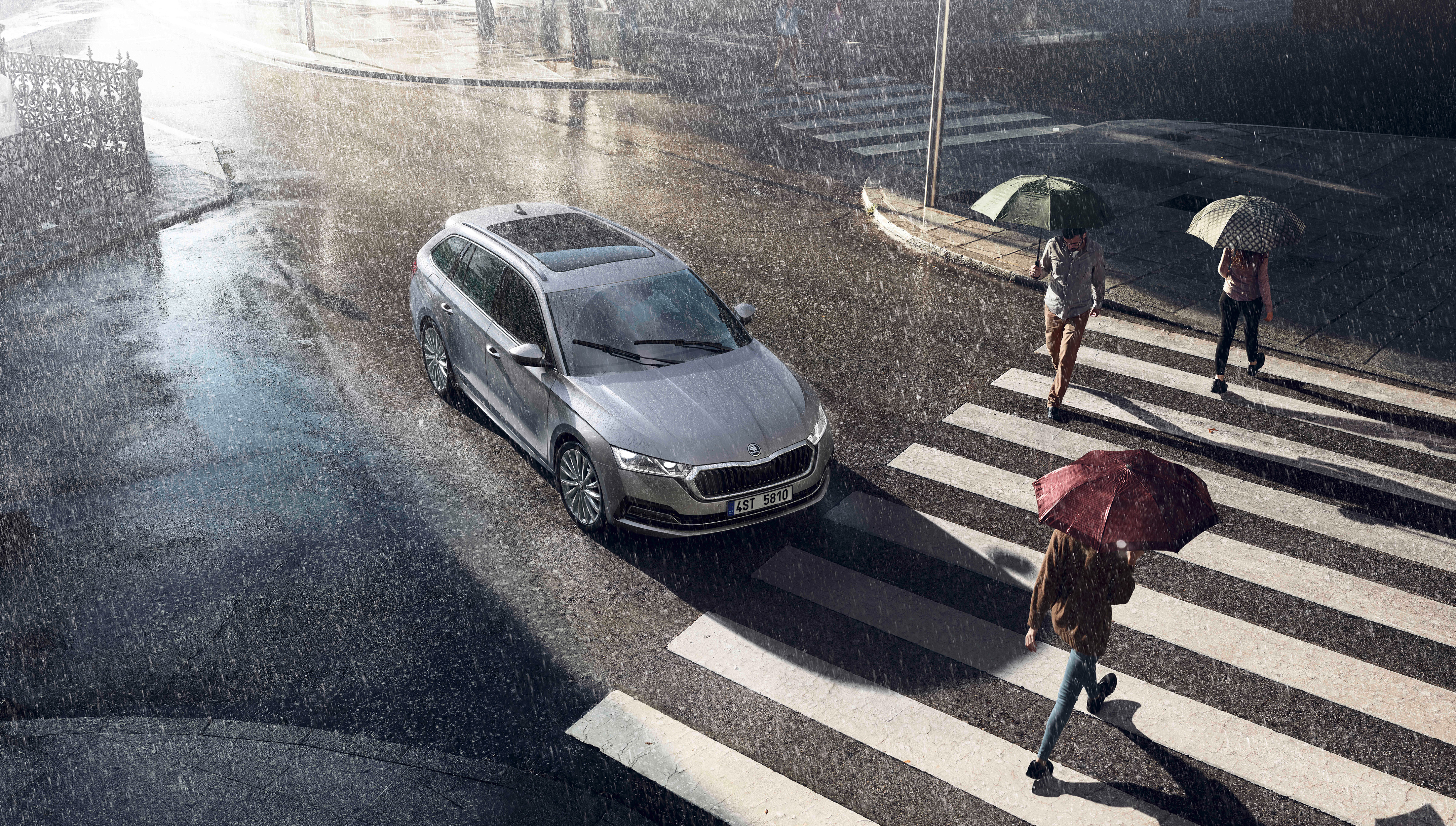Main functions of the RLFS sensor
• Rain sensor
This evaluates the quantity of water on the windscreen. For this to work, the lights control has to be set to AUTO and the wiper stalk position to INT. Then the driver can forget all about it: information about the quantity of water is sent to the central control unit, which sends an instruction to activate the wiper motor. The only thing that can be adjusted is the sensor sensitivity – there is a small rotary dial with four sensitivity levels on the upper side of the stalk. A small drop means low sensitivity, a large drop means high sensitivity.

• Light sensor
Diodes inside the sensor scan the light conditions in front of and above the car and perpendicular to the windscreen. The sensor sends the information to the central control unit, which uses it to control other functions of the car. The car thus knows whether it’s light or dark, whether it has entered a tunnel or is simply on a tree-lined road, and it performs the appropriate lighting adjustments based on constantly running calculations.
• Moisture sensor
The sensor assesses the humidity inside the car, sunlight intensity and the temperature on the interior side of the windscreen. The central control unit processes the data and sends it to the air-conditioning control unit, which adjusts the air-conditioning settings to meet the driver’s requirements and to prevent windscreen fogging. The sensor can even tell which side of the car the sunlight is stronger on, so it can make different adjustments for the right and left sides of the interior.




































